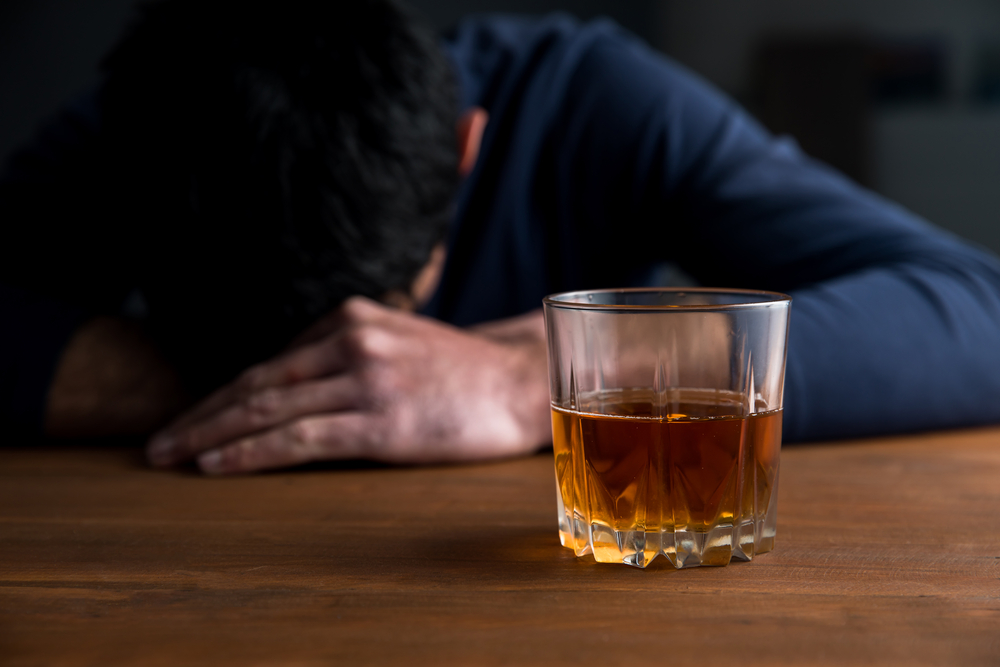Within the United States, The National Eating Disorder Association (NEDA) has forecasted that approximately 30 million people suffer from eating disorders such as anorexia, bulimia, or binge eating disorder in their lifetime. Worldwide it is around 70 million people in total. Let those numbers sink in!
It’s the right time to be informed and know how to cope with an eating disorder, it’s symptoms, treatments and more.
There is a good chance you may know someone struggling with an eating disorder, or maybe it is you. It is so important to note, that whoever is affected, eating disorders are real, complex medical, and mental illnesses that cause severe physical, mental, and social effects. They are NOT a fad, phase, or lifestyle choice.
Whether you or a friend or family member is in need of treatment but has not yet accepted help, is in treatment, or has completed treatment, care and concern can go a long way in helping someone with an eating disorder.
Whatever the situation may be, there is no easy fix for these complex conditions. However, there is a multitude of ways that an individual can offer encouragement and support to others. There are many ways how to deal with eating disorder.
Eating disorders can be life-threatening and even fatal if not recognized and treated accordingly. At Behavioral Health Centers, our facility provides comprehensive treatment methods and resources. These services can help people with mental illness and addiction to effectively learn how to cope with their conditions. This enables these individuals to recover and live healthier and purposefully.
What Is An Eating Disorder?
An eating disorder is defined as a serious mental disorder, characterized by someone’s life being controlled by an unhealthy preoccupation with thoughts and behaviors related to eating food, exercising, and body size, shape, and weight.
People with eating disorders are extremely critical of themselves and the way their body looks, as well as, how people perceive them. They usually feel “fat” and see themselves as overweight, when in reality, the mirror is playing tricks on them so to speak. Body dysmorphia is another topic, however.
This mental condition essentially causes a person to obsess with what they eat, how much they weigh, and how their body looks. As a result, their behaviors may change. They may starve themselves or experience other behavioral changes. These actions are a reflection of having pervasive feelings of intense fear or anxiety that they will gain weight or become fat.
Again, it is important to dispel the major misconception that eating disorders are a lifestyle choice, a type of yo-yo diet, or a cry for attention. They are mental diseases that take on various forms. These disorders control many aspects of a person’s daily life. Women are more likely to have an eating disorder, but men also can develop them as well.

Types of Eating Disorders
The Diagnostic and Statistical Manual of Mental Disorders (DSM) categorizes eating disorders into 4 different types, which are as follows:
- Anorexia Nervosa
- Bulimia Nervosa
- Binge Eating Disorder
- Other Specified Feeding and Eating Disorders (OSFED)
The two most common eating disorders (anorexia and bulimia) have their differences in the way the conditions develop. However, the symptoms are very similar. Eating disorders do not discriminate. People of all ages, sexes, genders, body types, weights, etc., can have an eating disorder.
Anorexia Nervosa
Anorexia nervosa, commonly known as anorexia, is a life-threatening eating disorder. It is characterized by self-starvation and excessive weight loss. People with anorexia are defined by severe food restrictions. They either limit the amount of food consumed or only eat certain types of food. It is very common for people with anorexia to view themselves as overweight even though they are actually underweight.
1 in 200 women suffers from anorexia. On average, girls develop this type of eating disorder at 16 or 17. Girls between the ages of 13 and their early 20s are most at risk.
Symptoms of Anorexia Nervosa
The symptoms of Anorexia include:
- Eating inadequately and starving oneself, leading to malnutrition and significant weight loss
- Skipping meals
- Rapid weight loss or “low body weight”
- Excessive exercising
- Having obsessive and intrusive thoughts and fears about gaining ANY weight; thus, behaving in precautionary ways to prevent gaining weight, such as not eating or eating very little.
- An obsession with counting calories and monitoring the contents or ingredients within food
- Having food rituals or obsessive-compulsive behavior. For example, cutting food into tiny pieces, refusing to eat around others, and hiding or discarding of food.
- Amenorrhea (having no period/menstrual cycle)
- Anemia (low iron levels)
- Brittle hair and nails
- Skin becomes yellow (Jaundice)
- Hypokalaemia (low potassium levels in the blood)
- Hair growing all over the body
- Cuts or sores on the skin
- Having low self-esteem, hating their self-image
For people diagnosed with anorexia, the associated malnutrition, and rapid weight loss that occurs, as a result, commonly causes complications with various major organ systems in the body. This includes mostly the heart and kidneys.
Bulimia Nervosa
Bulimia nervosa, known as bulimia, is a life-threatening eating disorder that is the opposite of anorexia in terms of behavior. As anorexia is characterized by people not eating or starving themselves, individuals with bulimia tend to eat or binge large amounts of food.
In other words, bulimia nervosa is a cycle of binge eating followed by behaviors, such as self-induced vomiting, excessive exercise, or severely restricting food intake.
After eating, bulimics purge or self-induce vomiting to get rid of the food they consumed, as they believe the extra calories will make them gain weight or become fat. This is very unhealthy, as their thoughts are still preoccupied with finding a way to use food as a coping mechanism.
3 in 100 women in the United States suffer from bulimia nervosa. In their lifetime, 1.1% – 4.2% of females will have this type of eating disorder.
Symptoms of Bulimia Nervosa
The symptoms of bulimia are serious and potentially life-threatening. They include the following:
- Secretly binge eating large amounts of food
- Disappearing after meals
- Frequent overeating
- Purging, self-induced vomiting after eating
- Using laxatives or diuretics
- Obsessive or compulsive exercise
- Extreme concern with body weight and shape
- Weight loss
- Swollen or sore throat and neck
- Acid reflux
- Oral health issues, including Halitosis (Bad breath), chipped or broken teeth, Gingivitis (Bleeding gums)
- Severe dehydration
- Electrolyte imbalance
- Irregular menstruation
- Depression
- Anxiety
Binge Eating Disorder (BED)
Binge eating disorder (BED) is the most common type of eating disorder in the United States, affecting 8% of American adults. BED is a severe, mental condition characterized by recurrent episodes of eating large quantities of food in one sitting followed by self-induced purging or vomiting. This occurs even if the person isn’t necessarily hungry.
Someone with BED often cannot control how much they are eating and engage in this type of addictive behavior to cope with unwanted emotions and stress.
Symptoms of Binge Eating Disorder
Symptoms of binge eating disorder include the following:
- Uncontrolled episodes of eating large amounts of food in a short time
- Eating much more rapidly than normal
- Feelings of shame and guilt and disgust with oneself
- Low self-esteem
- Binge eating until uncomfortably full
- Eating large amounts without being hungry
- Feelings of guilt or disgust with oneself
- Eating alone due to feeling embarrassed and shameful
Prevalence of Eating Disorders
The prevalence of eating disorders is astonishing. According to The National Association of Anorexia Nervosa and Associated Disorders, (ANAD), eating disorders have the highest mortality rate of any mental illness.
While the occurrence of eating disorders varies between countries, studies and evidence-based research shows, that on a global scale, there is an agreement that these mental conditions, including disordered eating and body image issues, have increased worldwide over the last 30 years.

Eating Disorder Statistics
The problem with statistical research presented on eating disorders is that the accuracy of data may not be reliable because many suffer from eating disorders do not seek treatment for various reasons. This includes denying they have a problem, feelings of embarrassment, guilt, shame, confusion of symptoms, and financial burden.
The four types of eating disorders may be similar in some ways, they are also present themselves differently in terms of expression of behaviors and symptoms. A person who does not fit under the DSM-5’s classification of anorexia, for example, can still have an eating disorder. Here are some important and shocking statistics on eating disorders!
- Every 62 minutes a person dies from eating disorder complications.
- Genetic, environmental factors, and personality traits all combine to create risk for the development of eating disorders.
- 1 in 5 anorexia deaths results in suicide.
- There is a 50-80% genetic risk of developing anorexia and bulimia.
- 33-50% of patients with anorexia have other forms of mental illness including mood disorders such as depression and anxiety.
- Nearly 1 in 10 people with bulimia have co-occurring conditions such as substance abuse, typically with alcohol.
- Men can have eating disorders as well as women.
Risk Factors of Eating Disorders
Similar to addiction, in the early stages of having an eating disorder, individuals often deny that they have a problem, or do not recognize the signs. This, as mentioned before, can be extremely detrimental to one’s overall health.
As a result, without treatment of both emotional and physical symptoms of eating disorders, other co-occurring psychiatric conditions that were not pre-existing can develop such as anxiety, depression, obsessive-compulsive disorder (OCD), and most importantly, drug and alcohol addiction. Heart problems and other fatal conditions can also occur as a result.
As with most mental illnesses, eating disorders are not caused by just one factor but by a combination of physical, psychological, and biological factors. These are important factors to recognize, because often people with these disorders hide that they have a problem, due to the stigma surrounding mental illness, such as embarrassment, shame, and guilt.
The signs and symptoms of eating disorders to recognize include the following:
Physical Warning Signs
The physical warning signs of eating disorders include the following:
- Sudden or rapid weight loss
- Frequent changes in weight
- Sensitivity to cold, even if it is warm
- Loss of period or disturbance of the menstrual cycle (Amenorrhea)
- Signs vomiting including swollen cheeks or jawline, calluses on knuckles or fingers, damage to teeth
- Fainting, dizziness
- Feeling fatigued including always feeling tired, and unable to perform normal activities
Psychological Warning Signs
The psychological warning signs of eating disorders include the following:
- Uncontrollable behaviors around food
- Preoccupation with body shape, weight and appearance
- Intense fear of gaining weight
- Constant preoccupation with food or anything relating to food
- Dissatisfaction with body image
- Distorted body image (complaining of feeling or looking fat when actually a healthy weight or underweight)
- Not being able to take or hear or criticism about body shape or weight, eating or exercise habits
- Heightened anxiety around mealtimes
- Depression or anxiety
- Moodiness or irritability
- Low self-esteem (feelings of worthlessness, shame, and guilt)
- Insomnia
Biological Warning Signs
- Genetic predisposition to mental conditions such as eating disorders, depression, and anxiety
- Having a family history of eating disorders, mental conditions, or addiction
- Certain personality styles, for example, obsessive-compulsive personality type
- Personal or family history of being overweight or obese
- Troubled relationships with family, friends, and significant others
- Sexual or physical abuse
If you, or somebody you know, is experiencing several of the following symptoms, it is important to seek help immediately to determine if you or they have a problem.
Any combination of these symptoms can present a diagnosis of an eating disorder, or not. It depends on the factors above. As the signs and symptoms for each type can be similar to each other, that is why it is important to seek a professional opinion.
Dual Diagnosis: Connection Between Eating Disorders and Addiction
Aside from the medical complications associated with eating disorders, these mental conditions have a high mortality rate. In a reported study, the mortality rate in people with Anorexia increased six-fold compared to the general population. This is a result of starvation, substance abuse, and suicide.
Many research studies have demonstrated the various similarities between the conditions and mechanisms between a dual diagnosis of eating disorders and addiction.
Eating disorders and addiction are frequently co-occurring. This is because personality traits, genetics, and other factors cause people to turn to drugs and alcohol as a means to cope with the symptoms of their eating disorder and compulsive behaviors.
It is common for people to not realize that eating disorders are often complicated by symptoms of underlying or pre-existing mental conditions, including the following:
- Depression
- Anxiety
- Bipolar Disorder
- Schizophrenia
- Obsessive-Compulsive Disorder (OCD)
- ADD/ADHD
To understand eating disorders and addiction, people need to learn how to cope with an eating disorder and realize that there is help available. This can be done by realizing that treatment for dual diagnoses is available through various coping mechanisms and treatment programs. Know that you are not alone!

How to Cope With An Eating Disorder Treatment
Unfortunately, only 1 in 10 people struggling with eating disorders will receive treatment. As mentioned above, this is due to a variety of reasons. The most important being stigma, and how society perceives mental illness.
Feelings of shame, guilt, and discrimination for having a mental condition hinders many people from receiving life-saving treatment. Due to this, people who have already entered rehab often end up relapsing in early recovery. However, with the right form of mental health treatment, support, and motivation a full recovery and improved quality of life are possible.
The good news is that there are many treatment options available for people with eating disorders such as anorexia and bulimia, as well as substance use disorders. Research has shown, that with treatment, 60% of eating disorder sufferers make a full recovery.
Eating disorders are treated most effectively when diagnosed and intervened with as early as possible. The earlier a person receives treatment, the greater the probability that they will make a full recovery, and be able to live a more fulfilling life.
Treatment with the best long-term and successful outcomes include tailored plans to an individual’s needs, including both the severity of the disorder and the patient’s problems, needs, and strengths.
Co-occurring disorders are treated in a dual diagnosis program. Most involve a combination of medical care, therapy, educational resources, and speaking to a nutritionist.
At Behavioral Health Centers, we have been studying eating disorders and their link between emotional and physical health. The first step in treating eating disorders is to help individuals get back to a healthy weight for their body type by getting the cycle of binging and purging under control.
Within our residential treatment and outpatient treatment facilities, our multidisciplinary team addresses a patient’s eating disorder symptoms and medical complications, as well as psychological, biological, and physical factors that have been contributing to the cause of their condition.
In addition, we also examine underlying emotional problems and other forms of mental illness such as substance abuse, to avoid further complications including worsening one’s abnormal eating patterns.
Psychotherapy and Nutritional Counseling
Individual, group, and family therapy sessions help individuals with eating disorders specifically understand their thoughts, emotions, and behaviors that trigger their unhealthy episodes. In addition, medications have also been prescribed and proven to be effective.
Lastly, due to the serious physical problems caused by these mental conditions, it is important that our comprehensive treatment plans for a person with anorexia nervosa, bulimia nervosa or binge eating disorder include medical care in conjunction with nutritional therapy.
This helps individuals engage in healthy eating habits to rebuild their overall wellbeing, mentally and physically. It is important to note, that the exact form of treatment to tend to the needs of each individual will vary.
How to Cope With An Eating Disorder
It is important for individuals struggling with an eating disorder to find a health professional they trust to help coordinate and oversee their care. At Behavioral Health Centers, we help people learn coping mechanisms to manage their eating disorders effectively. These include:
- Keeping a food and mood diary: Writing things out can help identify and keep track of personal triggers and control binge eating impulses.
- Practice mindfulness: Increase awareness of triggers and practice self-control and self-acceptance through holistic approaches such as meditation and yoga.
- Support: Support is the key to any successful recovery. Finding someone to talk to online, at a support group, a friend, family member, or significant other can help you feel more connected and motivated to keep going.
- Exercise: Moderate exercise approved by your doctor can help improve your body image, boost mood through the release of endorphins, reduce stress and anxiety, etc.
- Sleep: Lack of sleep is known to be associated with irregular eating patterns. It is suggested to get 7-8 hours of sleep per night to help reduce triggers.
How Behavioral Health Centers Can Help You Recover Today
If you or a loved one is suffering from a mental condition such as an eating disorder and/or addiction to drugs and alcohol, contact us at Behavioral Health Centers today! We can help you best cope with your conditions, resulting in optimal health and improved quality of life.
References
https://nedc.com.au/eating-disorders/eating-disorders-explained/something/whats-an-eating-disorder/





